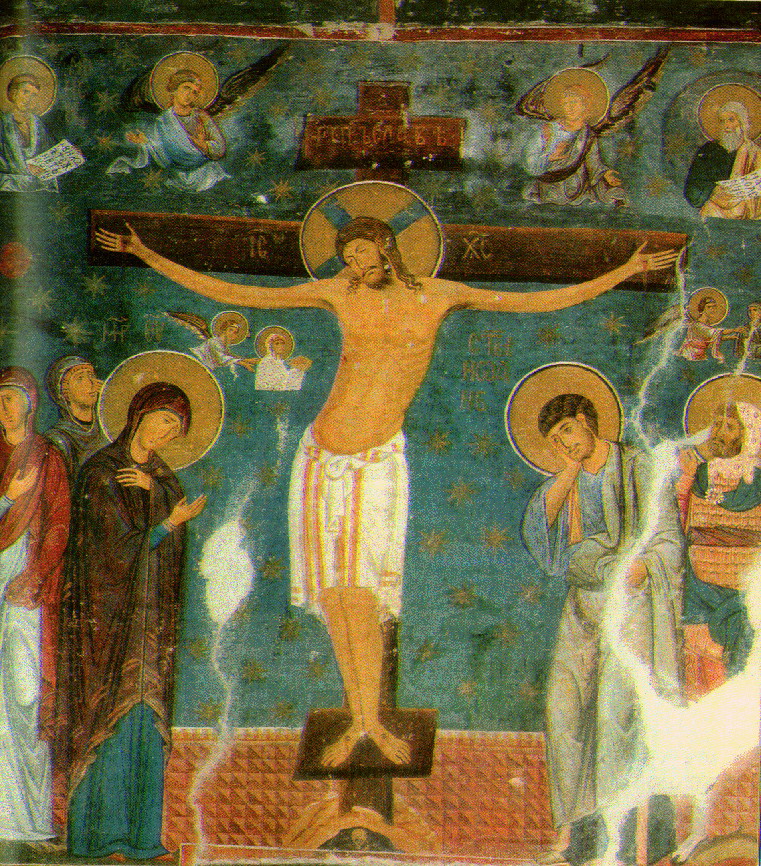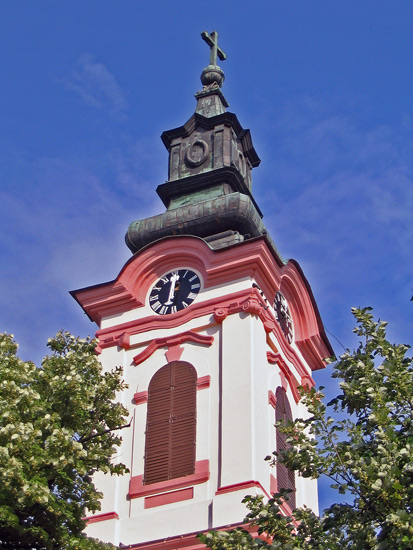|
é ovinistiáka Farsa
é ovinistiáka farsa ( sr, ŴŃÅýšŧšîîÅ¡îŤů îůîîů), ''Chauvinistic Farce'' in English is a theatre play, written by Radoslav Pavloviá that performed across former Yugoslavia prior to and during its dissolution. A total of 4 sequels of the play were produced from 1985 to 1998, and according to one of the main actors, Predrag Ejdus, the play was performed more than 1800 times, and was performed in almost every city in former Yugoslavia that had a decent theatre. Thanks to its great popularity with the audience, the play launched the carriers of then young and later famous, main actors Josif Tatiá and Predrag Ejdus. The play is mostly set as a dialog between a stereotypical Serb, Slobodan Mihajlovic (played by Tatiá) and a stereotypical Croat, Bernard Drah (played by Ejdus), both of whom drink heavily. The script derives its capacity to make the audience laugh from the everlasting differences between Serbs and Croats, and the destiny of two people historicall ... [...More Info...] [...Related Items...] OR: [Wikipedia] [Google] [Baidu] |
Radoslav Pavloviá
Radoslav (Lale) Pavloviá ( sr, ŠůÅÇŃîţůÅý ÅůÅýţŃÅýÅ¡î; born 8 September 1954, in Aleksandrovac, Serbia) is a Serbian writer. Pavlovic authored numerous theatre plays and film/TV scripts popular with the audience and acclaimed by the critics. He is best known for his theatre plays é ovinistiáka farsa, performed more than a thousand times across ex-Yugoslavia, ''Mala'', and ''Moja Draga'' performed for hundreds of times in Belgrade theaters, as well as movies Balkan Rules (1997), Living like the rest of us (1983), Hajde da se volimo 3 (1990) featuring ex-Yugoslavia mega-star Lepa Brena, and TV series Moj Rodjak sa Sela (2008) scoring record viewership of over 3 million viewers per episode. From 2012 to 2017 Pavloviá served as advisor for Culture to the President of Serbia, Tomislav Nikoliá. In the context of his political role, Pavloviá was working on causes related to Serbia's historical heritage and raising awareness of it within public, such as the life an ... [...More Info...] [...Related Items...] OR: [Wikipedia] [Google] [Baidu] |
Lazar Ristovski
Lazar "Laza" Ristovski ( sr-Cyrl, ÅůÅñůî Å Å¡îîŃÅý, born 26 October 1952) is a Serbian retired actor, director, producer and writer. He has appeared on stage about 4,000 times, and starred in over 40 films, TV series and TV dramas, mostly in lead roles. He briefly served as a member of the National Assembly from 1 August 2022 until his resignation on 9 August 2022. Biography He was born on 26 October 1952, in Ravno Selo village, part of Vrbas, SR Serbia, FPR Yugoslavia (modern Serbia), into a family of Yugoslav colonists, his father being born in Macedonia and was from Gugjakovo and his mother in Montenegro. He graduated from the ''Faculty of Dramatic Arts'' of the University of Belgrade as an actor. In 1999 ''The White Suit'' an auteur film by Ristovski (director, writer, lead actor, and producer) was at the Cannes Film Festival in the Critics Week program. ''The White Suit'' was the Serbian entry for the 1999 Academy Awards. Lazar Ristovski is the sole ow ... [...More Info...] [...Related Items...] OR: [Wikipedia] [Google] [Baidu] |
Culture Of Serbia
Serbian culture is a term that encompasses the artistic, culinary, literary, musical, political and social elements that are representative of Serbs and Serbia. History The Byzantine Empire had a great influence on Serbian culture as it initially governed the Byzantine and Frankish frontiers in the name of the emperors. Serbs soon formed an independent country. They were baptised by Eastern Orthodox missionaries and adopted the Cyrillic script, with both Latin and Catholic influences in the southern regions. The Republic of Venice influenced the maritime regions of the Serbian state in the Middle Ages. The Serbian Orthodox Church gained autocephaly from Constantinople in 1219. The pope declared Stefan the First Crowned king, starting a prosperous medieval period of Serbian culture. The Ottoman Empire conquered the Serbian Despotate in 1459, ending a cultural and political renaissance. Ottomans ruled the territory and influenced Serbian culture, especially in the southern ... [...More Info...] [...Related Items...] OR: [Wikipedia] [Google] [Baidu] |
Arts In Serbia
Serbian art refers to the visual arts of the Serbs and their nation-state Serbia. The medieval heritage includes Byzantine art, preserved in architecture, frescos and icons of the many Serbian Orthodox monasteries. In the Early modern period, Serbian visual arts began to be influenced by Western art, culminating in the Habsburg monarchy in the late 18th century. The beginning of modern Serbian art is placed in the 19th century. Many Serbian monuments and works of art have been lost forever due to various wars and peacetime marginalizations. Prehistory Currently, Europe's oldest known civilization was discovered in Serbia, namely Lepenski Vir and Vináa culture. In Serbia, Archaeological Sites of Exceptional Importance (Serbia) are numerous and have the highest level of state protection under the Law on Cultural Heritage. See: Prehistoric sites in Serbia and Prehistory of Southeastern Europe for artifacts and sculpture found at the archeological sites of Lepenski Vir. Roman peri ... [...More Info...] [...Related Items...] OR: [Wikipedia] [Google] [Baidu] |
Belgrade
Belgrade ( , ;, ; Names of European cities in different languages: B, names in other languages) is the Capital city, capital and List of cities in Serbia, largest city in Serbia. It is located at the confluence of the Sava and Danube rivers and the crossroads of the Pannonian Basin, Pannonian Plain and the Balkan Peninsula. Nearly 1,166,763 million people live within the administrative limits of the City of Belgrade. It is the third largest of all List of cities and towns on Danube river, cities on the Danube river. Belgrade is one of the List of oldest continuously inhabited cities, oldest continuously inhabited cities in Europe and the world. One of the most important prehistoric cultures of Europe, the Vináa culture, evolved within the Belgrade area in the 6th millennium BC. In antiquity, Thracians, Thraco-Dacians inhabited the region and, after 279 BC, Celts settled the city, naming it ''Singidunum, Singidé¨n''. It was Roman Serbia, conquered by the Romans under the reign ... [...More Info...] [...Related Items...] OR: [Wikipedia] [Google] [Baidu] |
Blic
''Blic'' (Cyrillic: Åţšî, ) is a daily middle-market tabloid newspaper in Serbia. Founded in 1996, ''Blic'' is owned by Ringier Axel Springer Media AG, a joint venture between Ringier media corporation from Switzerland and Axel Springer AG from Germany. Ownership The initial owners of ''Blic'', Austria-based businessmen Aleksandar LupéÀiá and Peter Kelbel, sold the paper along with its parent company Blic Press d.o.o. in November 2000 to Gruner + Jahr, a German publishing firm majority-owned by the Bertelsmann conglomerate, right after the October 5th overthrow in Serbia. Initially, G+J bought 49% stake in Blic Press d.o.o., but eventually bought the remaining stake as well. In March 2003, Gruner + Jahr sold its 25.1% stake in Blic Press d.o.o. to Vienna Capital Partners (VCP)S ... [...More Info...] [...Related Items...] OR: [Wikipedia] [Google] [Baidu] |
Varaéƒdin
) , image_photo = , image_skyline = , image_flag = Flag of Varaéƒdin.svg , flag_size = , image_seal = , seal_size = , image_shield = Grb_Grada_Varaéƒdina.svg , shield_size = , city_logo = , citylogo_size = , image_map = , mapsize = , map_caption = , image_map1 = , mapsize1 = , map_caption1 = , image_dot_map = , dot_mapsize = , dot_map_caption = , dot_x = , dot_y = , pushpin_map = Croatia , pushpin_label_position = , pushpin_map_caption = Location of Varaéƒdin within Croatia , pushpin_mapsize = , subdivision_type = List of sovereign states, Country , subdivision_name = , subdivision_type1 = Countie ... [...More Info...] [...Related Items...] OR: [Wikipedia] [Google] [Baidu] |
Rijeka
Rijeka ( , , ; also known as Fiume hu, Fiume, it, Fiume ; local Chakavian: ''Reka''; german: Sankt Veit am Flaum; sl, Reka) is the principal seaport and the third-largest city in Croatia (after Zagreb and Split). It is located in Primorje-Gorski Kotar County on Kvarner Bay, an inlet of the Adriatic Sea and in 2021 had a population of 108,622 inhabitants. Historically, because of its strategic position and its excellent deep-water port, the city was fiercely contested, especially between the Holy Roman Empire, Italy and Croatia, changing rulers and demographics many times over centuries. According to the 2011 census data, the majority of its citizens are Croats, along with small numbers of Serbs, Bosniaks and Italians. Rijeka is the main city and county seat of the Primorje-Gorski Kotar County. The city's economy largely depends on shipbuilding (shipyards "3. Maj" and "Viktor Lenac Shipyard") and maritime transport. Rijeka hosts the Croatian National Theatre Ivan pl. ... [...More Info...] [...Related Items...] OR: [Wikipedia] [Google] [Baidu] |
Banja Luka
Banja Luka ( sr-Cyrl, Åůîů ÅîŤů, ) or Banjaluka ( sr-Cyrl, ÅůîůţîŤů, ) is the second largest city in Bosnia and Herzegovina and the largest city of Republika Srpska. Banja Luka is also the ''de facto'' capital of this entity. It is the traditional centre of the densely-forested Bosanska Krajina region of northwestern Bosnia. , the city proper has a population of 138,963, while its administrative area comprises a total of 185,042 inhabitants. The city is home to the University of Banja Luka and University Clinical Center of the Republika Srpska, as well as numerous entity and state institutions for Republika Srpska and Bosnia and Herzegovina respectively. The city lies on the Vrbas river and is well known in the countries of the former Yugoslavia for being full of tree-lined avenues, boulevards, gardens, and parks. Banja Luka was designated European city of sport in 2018. Name The name ''Banja Luka'' was first mentioned in a document dated to 6 February 1494 b ... [...More Info...] [...Related Items...] OR: [Wikipedia] [Google] [Baidu] |
Sombor
Sombor ( sr-Cyrl, ÅÀŃťÅÝŃî, ; hu, Zombor; rue, ÅŃťÅÝŃî, Zombor) is a List of cities in Serbia, city and the administrative center of the West Baáka District in the autonomous province of Vojvodina, Serbia. The city has a total population of 47,623 (), while its administrative area (including neighboring villages) has 85,903 inhabitants. Name and etymology In Serbian language, Serbian, the city is known as ''Sombor'' (ÅÀŃťÅÝŃî), in Hungarian language, Hungarian and German language, German as ''Zombor'', in Croatian language, Croatian and Bunjevac language, Bunjevac as ''Sombor'', in Pannonian Rusyn language, Rusyn as ''Zombor'' (ÅŃťÅÝŃî), and in Turkish language, Turkish as ''Sonbor''. The older Hungarian name for the city was ''CzoborszentmihûÀly''. The name originates from the Czobor family, who were the owners of this area in the 14th century. (The family name came from the Slavic name ''Cibor''.) The Serbian language, Serbian name for the city ''(Sombor)' ... [...More Info...] [...Related Items...] OR: [Wikipedia] [Google] [Baidu] |
KruéÀevac
KruéÀevac ( sr-cyr, ÅîîîÅçÅýůî, , tr, Alacahisar or Kruéevca) is a city and the administrative center of the Rasina District in central Serbia. It is located in the valley of West Morava, on Rasina river. According to the 2011 census, the city administrative area has a population of 136,752 while the urban area has 81,316 inhabitants. The city was founded in 1371, by Prince Lazar of Serbia (1371ã1389), who used it as his seat. Etymology The etymology is derived from the Serbian word for "river stone", ''kruéÀac'' which was largely used for a building at that time. History KruéÀevac was founded in 1371, as a fortified town in the possession of Lord Lazar Hrebeljanoviá. The Lazarica Church (or ''Church of St, Stephen'') was built by Lazar between 1375ã78, in the Morava architectural style. It is mentioned in one of Lazar's edicts in 1387, as his seat, when he affirmed the rights of Venetian merchants on Serbian territory. In preparation for the Battle of Kosov ... [...More Info...] [...Related Items...] OR: [Wikipedia] [Google] [Baidu] |
.jpg)


.jpg)



